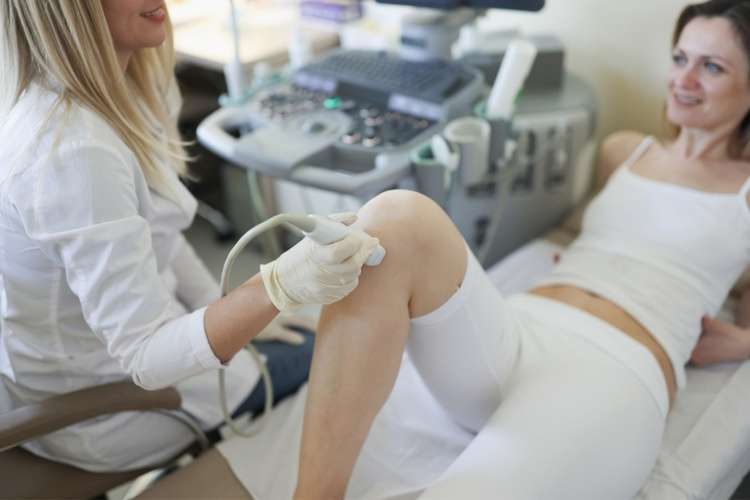X-Ray Technician Training: Skills, Steps, and Career Paths
Radiologic technologists, commonly called X-ray technicians, play a vital role in healthcare by producing diagnostic images that guide medical decisions. Training combines classroom study in anatomy, radiation physics, and patient care with hands-on clinical rotations in hospitals and imaging centers. Proper training prepares students for certification and employment in medical settings where accuracy, safety, and communication matter.

This article is for informational purposes only and should not be considered medical advice. Please consult a qualified healthcare professional for personalized guidance and treatment.
What does an X-ray technician do in healthcare?
An X-ray technician captures diagnostic images that help physicians evaluate injuries, disease, or internal conditions. In healthcare settings, technicians must position patients, operate radiographic equipment, and ensure image quality while minimizing radiation exposure. They also communicate with patients about the procedure, review images for basic issues, and collaborate with radiologists and other medical staff to support diagnosis. Strong attention to detail and adherence to safety protocols are critical in clinical workflows.
How to train for medical radiography (x-ray)?
Training typically begins with an accredited radiography program offered by community colleges, technical schools, or hospitals. Coursework covers human anatomy, physiology, radiation protection, imaging principles, and medical ethics. Most programs blend lectures with lab practice using imaging equipment and simulation, then require clinical rotations in hospital or outpatient imaging departments to build real-world skills. Programs may award a certificate, associate degree, or diploma; choosing an accredited program is essential for eligibility for certification exams.
Certification and registration for technicians
After completing an accredited training program, many graduates pursue national certification to improve employment prospects. In many countries, certification or registration demonstrates that a technician meets standardized competency requirements and can safely perform imaging procedures. Certification pathways typically require passing an examination and adhering to continuing education standards. Employers in hospitals and medical centers frequently prefer or require certified technologists to ensure consistent patient care and compliance with medical regulations.
Clinical experience and hospital placements
Clinical experience is the cornerstone of X-ray technician training. Rotations in hospital imaging departments expose students to a wide range of exams—trauma X-rays, chest and abdominal imaging, fluoroscopy, and patient care protocols. Hospital placements teach workflow in fast-paced medical environments, patient positioning for varied cases, teamwork with radiologists and nurses, and emergency response procedures. Quality clinical mentorship helps trainees transition into entry-level roles in hospital or outpatient settings.
Career pathways in healthcare and medical imaging
A career as an X-ray technician can lead to diverse opportunities within healthcare. Many start in general radiography roles at hospitals, clinics, or urgent care centers. With experience and additional training, technologists can specialize in areas like computed tomography (CT), magnetic resonance imaging (MRI), mammography, or interventional radiology. Some pursue supervisory roles, education, or sales and application specialist positions supporting imaging equipment. Continued certification and professional development expand options across healthcare systems and medical service providers.
| Provider Name | Services Offered | Key Features/Benefits |
|---|---|---|
| Mayo Clinic School of Health Sciences | Radiography programs with clinical rotations | Strong clinical placements, integrated into a large hospital system, focus on evidence-based practice |
| Pennsylvania College of Health Sciences | Associate degree in Radiography and allied health programs | Accredited curriculum, community-focused clinical partnerships, student support services |
| City Colleges of Chicago (Kennedy-King College) | Radiography and diagnostic imaging programs | Urban clinical access, affordable tuition for local students, hands-on lab training |
| Community College of Allegheny County | Radiography associate programs with hospital rotations | Regional clinical sites, workforce-aligned curriculum, transfer pathways to bachelor’s degrees |
| University of Cincinnati (Radiography Program) | Radiologic technology education with clinical experience | Established program with diverse clinical placements, emphasis on technology and patient care |
Conclusion
X-ray technician training blends technical knowledge, patient-centered skills, and hands-on clinical practice to prepare graduates for roles in hospitals and medical imaging centers. Choosing an accredited program with strong clinical partnerships and a clear pathway to certification helps ensure readiness for a career in diagnostic imaging. Continued learning and specialization can expand professional opportunities across healthcare.






